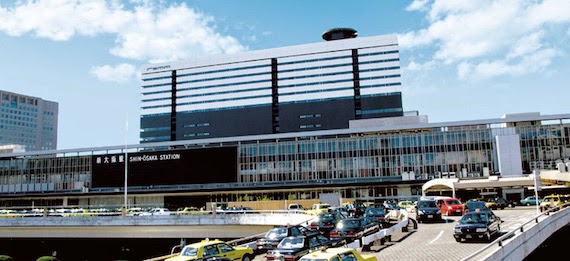Osaka is the next major city after Tokyo, and you can catch the characteristics of the city more readily by comparing with Tokyo, Japan's capital city. According to some people, the differences between these two cities can be explained by using a metaphor of the differences between U.S. West Coast and East Coast; Osaka is West Coast, Tokyo is East Coast. For example, Osaka people tend to have frank temperaments as opposed to Tokyo people generally preferring formal manners, though the differences are much subtler.
There are two big downtown-like cities that represent Osaka; Namba, A.K.A. Minami(south in Japanese) and Umeda, A.K.A. Kita(north in Japanese). And these both cities are located along the Midosuji, the main street of Osaka.
the view of Midosuji
Besides, Midosuji has the largest financial and business towns of Osaka such as Honmachi, Yodoyabashi, and Kitahama between the two downtowns.
Furthermore, going north along Midosuji beyond Umeda, there is Shin-Osaka town(New Osaka in Japanese), the entrance town of Osaka City; Shin-Osaka has a Shinkansen Station which is running through the Japanese islands from north to south.
Shin-Osaka station building
Then, let me tell you some characteristics of the two big towns briefly: Umeda and Namba.
Umeda As most of amusement areas are in the underground or buildings, having an entire grasp of the town from ground level is impossible. Since there are many office buildings around or in the town compared to Numba, the passersby are not necessarily enjoying their leisure time. Expect for some particular nightlife areas, Umeda is generally being such a safe town that people can walk around even in night time with reassurance of safety.
Namba The most flourishing area of Namba is shopping arcades running along Midosuji. Unlike Umeda, Namba is almost entirely a play spot, so most of passersby are spending their spare time shopping, drinking, or walking with company to seek something fun. Regarding the mood of the city, the more south you go, the more vulgar it becomes. To put it briefly, the Doutonbori river plays a role of the boundary line between the north -more sound- district and the south -more boisterous- district, though another expression that the south area is a drinking and amusement area and the north area is a shopping area may be more appropriate. At any rate, for avoiding getting yourself into trouble, not walking at midnight is more advisable option whether in the south or north.
Note about where to stay: I recommend the visitors to Osaka to stay at Esaka, which is located further north than Umeda along Midosuji. The town is located just at the middle point between suburb and metropolis, and you can go to Umeda about ten minutes and Namba about twenty minutes by the subway Midsuji Line. To put it briefly, Esaka is a town that has good environment for having good accessibility to the major towns of Osaka, and therefore has some hotels for tourists. For your information, Shin-Osaka, which has much more hotels and accessibility than Esaka, is another good location for staying although it hasn't as good environment as Esaka.
Next, let me introduce some attractive spots of Osaka from architectural perspective.
1 Umeda Sky Building
2 Nakanoshima Area
3 Midosuji Street
4 Shinsaibashi Shopping Street
5 Namba Parks
6 Osaka Castle
7 Sumiyoshi-Taisha (Sumiyoshi Great Shrine)
8 Shitennouji, a histric temple




0 件のコメント:
コメントを投稿